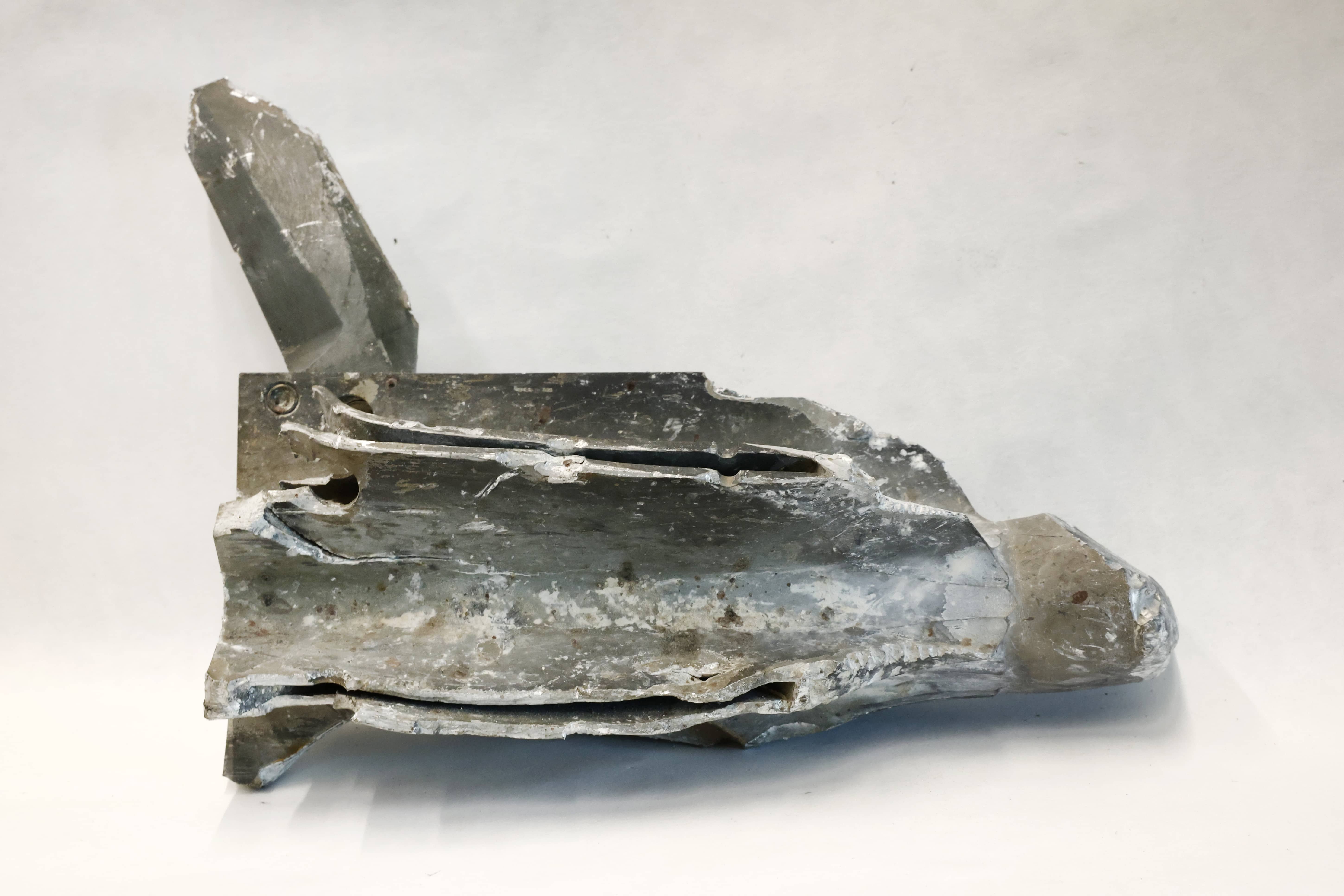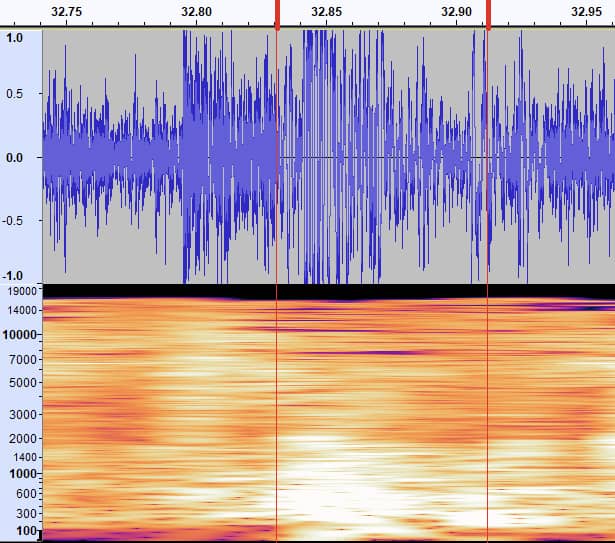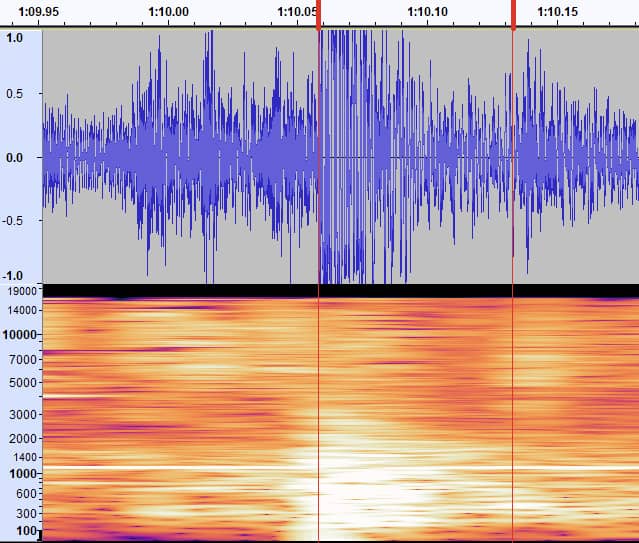Reuters journalist Issam Abdallah killed by Israeli tank, investigation finds
GoogleAds

Compulsory description of your video for screen readers.
A car used by Al Jazeera burns following the Israeli strike on journalists on October 13, 2023. Video courtesy of Al Araby.
Published
Dec. 7, 2023 02:30 PM GMT+5:30
An Israeli tank crew killed a Reuters journalist and wounded six reporters in Lebanon on Oct. 13 by firing two shells in quick succession from Israel while the journalists were filming cross-border shelling, a Reuters investigation has found.
The two strikes killed Reuters visuals journalist Issam Abdallah, 37, and severely wounded Agence France-Presse (AFP) photographer Christina Assi, 28, just over a kilometre from the Israeli border near the Lebanese village of Alma al-Chaab.
Reuters spoke to more than 30 government and security officials, military experts, forensic investigators, lawyers, medics and witnesses to piece together a detailed account of the incident. The news agency reviewed hours of video footage from eight media outlets in the area at the time and hundreds of photos from before and after the attack, including high-resolution satellite images.
As part of its investigation, Reuters also gathered and obtained evidence from the scene including shrapnel on the ground and embedded in a Reuters car, three flak jackets, a camera, tripod and a large piece of metal.
The Netherlands Organisation for Applied Scientific Research (TNO), an independent research institute that tests and analyses munitions and weapons for clients such as the Dutch defence ministry, examined the material for Reuters at its laboratories in The Hague.
TNO’s key findings were that the large piece of metal was the tail fin of a 120 mm tank round fired by a smoothbore tank gun positioned 1.34 km away from the reporters, across the Lebanese border.
Reuters presented the Israel Defense Forces (IDF) with its findings that the tank rounds were fired from within Israel and posed additional detailed questions, including whether Israeli troops knew they were firing upon journalists.
Lieutenant Colonel Richard Hecht, the IDF’s international spokesman, said: “We don’t target journalists.” He did not provide further comment.
The group of seven reporters from AFP, Al Jazeera and Reuters were all wearing blue flak jackets and helmets, most with “PRESS” written on them in white letters. There were journalists from at least another seven media outlets in and around Alma al-Chaab that day.
“The evidence we now have, and have published today, shows that an Israeli tank crew killed our colleague Issam Abdallah,” Reuters Editor-in-Chief Alessandra Galloni said.
“We condemn Issam’s killing. We call on Israel to explain how this could have happened and to hold to account those responsible for his death and the wounding of Christina Assi of the AFP, our colleagues Thaier Al-Sudani and Maher Nazeh, and the three other journalists,” she said. “Issam was a brilliant and passionate journalist, who was much loved at Reuters.”
‘Inexplicable and unacceptable’
AFP said the evidence assembled by Reuters confirmed its own analysis of the incident.
“It is absolutely essential that Israel provides a clear explanation for what happened. The targeting of a group of journalists who were clearly identified as media is both inexplicable and unacceptable,” said AFP Global News Director Phil Chetwynd.
Al Jazeera’s manager of international communications, Ihtisham Hibatullah, said: “The Reuters investigation into the October 13 attack underscores Israel’s alarming pattern of deliberately targeting journalists in an attempt to silence the messenger.”
International humanitarian law bars attacks on journalists as those in the news media have the full scope of protection granted to civilians and cannot be considered military targets.
In the days after the attack, Israel’s military said it was reviewing what had happened, but it has not made any findings public.
International criminal law expert Carolyn Edgerton, who has worked on war crimes cases in the Balkans, said filming Israeli tank positions at the border might have been considered a threat to the Israeli military, if that information was seen to “be of targeting value to forces in Lebanon”.
But she said in written responses to Reuters questions that two back-to-back rounds fired at a group of clearly identified journalists “is a clear violation of international humanitarian law and may also amount to the war crime of attacking civilians”.
Directly targeting civilians or civilian objects is strictly forbidden under the laws of armed conflict, such as the 1949 Geneva Conventions, which have been ratified by all U.N. member states. Neither Israel nor Lebanon are signatories to the International Criminal Court, whose 124 member states accept its jurisdiction in the prosecution of war crimes, crimes against humanity and genocide.
Shells hit 37 seconds apart
The attack was the first of two deadly strikes in the space of six weeks on reporters in Lebanon covering clashes between the Israeli military and Iranian-backed Hezbollah militants along the border in the wake of the Oct. 7 attack on Israel by Hamas.
Two journalists from Lebanese broadcaster Al Mayadeen were killed by a strike on Nov. 21 as they filmed near the border with Israel. Al Mayadeen blamed the IDF for their deaths. The Israeli military said in a statement it was a dangerous area to be in because of “active hostilities”.
Since the Gaza war started, Israeli forces and Hezbollah have traded fire on an almost daily basis across the border – known as the U.N. Blue Line, because it was demarcated to mark the point to where Israeli forces withdrew from southern Lebanon in 2000.
On Oct. 13, reports of armed fighters attempting to infiltrate into Israel from Lebanon and subsequent cross-border shelling drew reporters from at least 10 Lebanese and foreign news organisations – including Italian broadcaster Rai, German daily Die Welt and the Associated Press – to the area in and around Alma al-Chaab.
A Reuters team of three drove with two colleagues from AFP to a spot to the east of the village where Al Jazeera had been broadcasting a live feed of the border earlier that day.
A smartphone video taken by Reuters journalist Issam Abdallah shortly before the attack. Pictured: Reuters journalist Maher Nazeh; AFPTV journalist Dylan Collins; AFP photographer Christina Assi; Al Jazeera journalists Carmen Joukhadar and Elie Brakhya; and Abdallah, filming himself.
A smartphone video taken by Reuters journalist Issam Abdallah shortly before the attack. Pictured: Reuters journalist Maher Nazeh; AFPTV journalist Dylan Collins; AFP photographer Christina Assi; Al Jazeera journalists Carmen Joukhadar and Elie Brakhya; and Abdallah, filming himself.
Once set up, Reuters started feeding live footage to its TV clients around the world at 5.16 p.m. (1516 GMT), the sound of occasional shelling punctuating the steady shot of smoke rising from behind a wooded ridge to the south.
After filming for 45 minutes, amid the incessant buzz of drones overhead and an Israeli helicopter patrolling high in the sky, the Reuters team turned the camera to focus on an Israeli military outpost just over two kilometres away at Hanita and filmed a tank firing a shell from there into southern Lebanon.
A map showing where the Reuters, AFP and Al Jazeera crews were filming on Oct. 13, 2023, at a location east of the Lebanese village of Alma al-Chaab, and the direction of the Israeli strikes that hit them.
A map showing where the Reuters, AFP and Al Jazeera crews were filming on Oct. 13, 2023, at a location east of the Lebanese village of Alma al-Chaab, and the direction of the Israeli strikes that hit them.
Satellite image: Google © 2023 Maxar Technologies
The AFP and Al Jazeera teams were also broadcasting live and moved their cameras at the same time to show the Israeli outpost at Hanita as well.
Less than 90 seconds later, the first of two tank rounds fired from a different outpost smashed into Abdallah and the low wall he was leaning on, killing him instantly and knocking out the Reuters live feed.
The remnants of Al Jazeera’s car, which was hit by an Israeli strike on Oct. 13 and pictured here on Oct. 15. REUTERS/Maya Gebeily
The remnants of Al Jazeera’s car, which was hit by an Israeli strike on Oct. 13 and pictured here on Oct. 15. REUTERS/Maya Gebeily
The low wall on which Abdallah was leaning when he was hit by an Israeli tank round, which killed him instantly, pictured on Oct. 15. REUTERS/Maya Gebeily
The low wall on which Abdallah was leaning when he was hit by an Israeli tank round, which killed him instantly, pictured on Oct. 15. REUTERS/Maya Gebeily
The tripods holding the AFP and Al Jazeera cameras were a few metres further away and carried on broadcasting, capturing clouds of dust rising behind them and the cries of AFP’s Assi who had been hit in the legs by shrapnel.
Thirty seven seconds later, a second shell smashed into Al Jazeera’s car, setting it ablaze, knocked out the AFP feed and toppled Al Jazeera’s camera – leaving it filming clouds high in the sky above and capturing the curses and screams of the wounded journalists.
The Al Jazeera car burning after being hit by an Israeli strike in the attack that killed Abdallah. Video courtesy of Al Araby
The Al Jazeera car burning after being hit by an Israeli strike in the attack that killed Abdallah. Video courtesy of Al Araby
“Why were we hit? Why didn’t they fire a warning shot? If you don’t want us to take pictures, fire a warning shot. Why suddenly hit us without a prior warning, and then try to finish us off with the second strike?” said Reuters journalist Al-Sudani, 47, a photographer based in Baghdad.
Tail fin
The conclusions reached by the TNO scientists relied heavily on three crucial pieces of evidence: the aluminium tail fin from the tank round obtained by Reuters; previously unpublished video provided by Italian broadcaster Rai that showed the launch point of the second strike as well as the tank round in flight; and the audio of the firing and the impact of both rounds taken from Al Jazeera’s live feed.
Photographs and video taken by Al-Sudani and Reuters cameraman Nazeh in the minutes after the attack show the tail fin on the ground near Abdallah’s body in a field behind the low wall hit by the first round.
TNO said an Oct. 12 satellite image and a photo taken by Abdallah shortly before the attack show no signs of earlier ammunition strikes, such as cratering, debris or burn marks, so it determined that the tail fin was related to the attack.
Laboratory analysis revealed strontium and magnesium in a small pocket in the tail fin, elements which are typical tracer compounds, TNO said. A tracer is a pyrotechnic charge that burns during a projectile’s flight to show where it is going.
“Based on its features, the large metal piece recovered from the incident scene is identified as a tail fin assembly of a 120 mm tank ammunition round with a tracer that was fired using a 120 mm smoothbore tank gun,” TNO said.
The armoured brigades deployed in northern Israel by the IDF are equipped with Merkava battle tanks which have 120 mm smoothbore guns, said Nick Reynolds, a research fellow at the Royal United Services Institute in London.

A tail fin assembly from a tank round recovered from the site and analysed by experts at TNO REUTERS/Piroschka van de Wouw
There is no record of Hezbollah operating tanks with 120 mm weapons, three military experts said. The Lebanese army told Reuters that its largest calibre tank round is 105 mm and that it did not have tanks stationed by the border with Israel.
“I believe that it is in the military strategy of Israel to kill journalists so that they kill the truth,” said Lebanon’s Minister of Information Ziad Makary.
He said following the Reuters investigation, the government was considering presenting a case about Israeli violations, including Abdallah’s killing, in an international tribunal. He did not specify which tribunal but recognised the ICC was not an option as Lebanon was not a signatory.
Makary said the killing of journalists in Gaza and Lebanon was evidence that Israel was deliberately targeting media personnel.
The day after the attack, Lebanon’s security forces said they conducted a technical assessment at the site, which implicated Israel. The Lebanese army and military intelligence did not respond to requests to see the technical assessment.
Smoking gun
TNO analysed the audio recordings of both strikes from Al Jazeera’s live feed along with the video and audio from the Rai footage to geolocate the firing point of the rounds.
First strike

Second strike

View showing the waveforms and spectrograms of both muzzle blasts used by TNO to help calculate the firing point.
Journalists from Rai were filming the cross-border shelling on Oct. 13 from Alma al-Chaab when they heard the first strike and turned their camera towards the sound of the blast.
Their footage shows clouds of dust rising from behind trees where the first round hit – and some smoke to the right from where it was fired.
The camera then captured the second strike, showing the round being fired from the same area where smoke was still hanging in the air, and parts of Al Jazeera’s car being blown high above the trees upon impact.
A projectile is shot through the air in Alma al-Chaab, Lebanon, and lands behind the hill on Oct. 13, 2023. Video courtesy of Rai
A projectile is shot through the air in Alma al-Chaab, Lebanon, and lands behind the hill on Oct. 13, 2023. Video courtesy of Rai
Using the Al Jazeera audio, TNO calculated the interval between the sound of the two strikes and the thud of the muzzle blasts to determine that the firing point was 1,343 metres away from the reporters. It said the sound signatures from the strikes matched, showing they were both tank rounds fired from the same position.
Combining its acoustic analysis with the Rai footage, the location of the Rai camera and the location of the reporters, TNO triangulated the firing point to grid reference 33°05’57.3”N 35°12’44.3”E, with a margin of error of 17 metres.
According to Google Maps, that grid reference is on an earth ramp in a military outpost at Jordeikh within Israeli territory next to the border. Military experts say tanks drive up such ramps to fire and then retreat down the slope for cover.
A map showing where the Reuters, AFP and Al Jazeera crews were filming on Oct. 13, 2023 and the source of the tank fire that hit them, as identified by experts at TNO.
A map showing where the Reuters, AFP and Al Jazeera crews were filming on Oct. 13, 2023 and the source of the tank fire that hit them, as identified by experts at TNO.
Satellite image: Google © 2023 Airbus, Maxar Technologies
“Through triangulation we were able to determine the firing point which is just behind the U.N. Blue Line,” said Erik Kroon, TNO’s chief investigator for the Oct. 13 incident.
TNO said that, based on the tail fin features and the calculated average projectile velocity of 932 metres per second, the rounds that hit the journalists were two M329 Anti-Personnel/Anti-Material rounds, two M339 High-Explosive rounds, or a combination of both.
Both shells are manufactured by Haifa-based Elbit Systems, which did not respond to requests for comment.
A separate review of photographs of the shell fragments for Reuters by the London-based Center for Information Resilience, an international organisation that investigates potential human rights abuses and war crimes, also concluded that they were from a 120 mm tank round manufactured by Elbit Systems.
TNO said its analysis was done by seven employees in its Energetic Materials Department and reviewed by a senior scientist and a principal scientist.
TNO supplied Reuters with a 10-page summary of its key findings so far and will deliver a final report in early 2024.
A view of the Al Jazeera car on Oct. 13, with the position from which an Israeli tank fired on the group of journalists seen in the background. REUTERS/Issam Abdallah
A view of the Al Jazeera car on Oct. 13, with the position from which an Israeli tank fired on the group of journalists seen in the background. REUTERS/Issam Abdallah
In plain sight
The reporters were given the green light by Reuters to go to the area outside Alma al-Chaab because prior to Oct. 13, the area had not seen any significant escalation and was not considered high-risk.
“Issam was not in an active combat zone when he was struck. He and his colleagues were alongside journalists from other news outlets, in an area far from active conflict,” Reuters said in a statement.
The Reuters team did not alert the armed actors in that part of Lebanon – the Lebanese army, Hezbollah and U.N. peacekeeping troops – or the Israeli military of its presence, nor had any of the parties requested such notification.
“It is not standard practice to inform armed parties about our reporters’ precise locations. However, the Lebanese army required journalists to seek permission to work in southern Lebanon and so had been advised of the names of our journalists operating in the general area,” the news agency said.
Reuters cameraman Nazeh, 53, who is based in Baghdad, said they chose the location because it was on a hilltop in an open area with no tree cover or other buildings to obscure the reporters from nearby Israeli military outposts.
Nazeh said they felt relatively safe because they were clearly identified as journalists and in plain sight of the Israeli military – on the ground and in the air.
“My assessment is that we were in the safest possible place. We were very comfortable, sitting, filming and laughing and not feeling in danger because we would have never expected that they would hit journalists,” said Nazeh.
AFP video journalist Dylan Collins, 35, who was hit by shrapnel from the second strike, agreed.
“We weren’t hiding under the trees or anything. We were very clearly seven well-marked journalists, in press vests with helmets with a car that has ‘TV’ on it, standing in an open area in the face of an Israeli military site, maybe two kilometres, one and a half away from us to our west and to our east, multiple watchtowers,” said Collins.
“They knew we were there for well over an hour.”
The first person to arrive at the scene after the attack was Ali Ahmed Rabah from Qatari TV channel Al Araby, which had been filming nearby alongside Lebanese Broadcasting Corporation International.
Al Araby filmed the immediate aftermath as the dazed reporters tried to take in what had happened, now fully realising that Assi was very badly hurt, and Abdallah dead.
“We can’t bring Issam back. Issam is gone,” said Nazeh. “But he hears us, he sees us, and he’s waiting for us to do something for him. Nothing material. But to expose who hit him, who killed him, to the world.”
Maya Gebeily in Beirut and Alma al-Chaab, Anthony Deutsch in The Hague and David Clarke in London.
Laila Bassam, Tom Perry, Emilie Madi, George Sargent, Eleanor Whalley, Simon Gardner, Johnny Cotton, Milan Pavicic, Riham Alkousaa, Haider Kadhim, James Mackenzie and Simon Scarr.
Graphics and development by
Simon Scarr, Sudev Kiyada, Jackie Gu and Jitesh Chowdhury
Johnny Cotton and Lucy Ha
Source : https://www.reuters.com/graphics/ISRAEL-LEBANON/JOURNALIST/akveabxrzvr/
Auteur :
Date de Publication : 2023-12-07 09:00:00
Le droit d’auteur pour le contenu syndiqué appartient à la source liée.
GoogleAds




